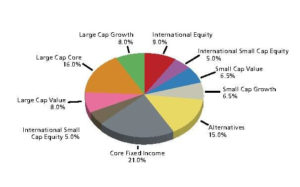The fear of a missed opportunity is often a powerful motivator to the new investor. With the recent gains in the market, new investors are pouring in.
Although starting out is relatively easy, navigating the various pitfalls of investing can be tricky without the right knowledge to back you up. In his classic book “Influence” Robert Cialdini lists “fear of loss” as an extremely powerful motivator, so we must be cautious in the face of the temptation to jump in with “both feet” without knowing what we are getting ourselves into.
Here are some tips for anyone wishing to act upon their interest in the stock market.
Herd Psychology
Normally, as things get more expensive people become more reluctant to buy, but quite the opposite happens when investing. The stock market is the only place where people become more interested the higher the cost of entry. There is a tendency for people to get a little crazy when greed comes into play, that goes all the way back to the “Tulip Bulb Mania” of the 1600s. This was first described in 1841 in Scottish journalist Charles Mackay’s book Extraordinary Popular Delusions and the Madness of Crowds. In it he stated that people often behave irrationally, giving the example of the tulip bulb mania, the South Sea Bubble, and the Mississippi Company. So, the new investor is wise to follow the advice of legendary investor Warren Buffet and “Be fearful when others are greedy and greedy when others are fearful”.
For more on the current state of the market see:
The Nature of Risk
No matter how secure your initial investment might appear to be, there is always a chance of losing a significant portion (or even your entire stake). This is why learning about the nature of risk is crucial in making sure you do not inadvertently bankrupt yourself on a whim. A key factor is called “Position sizing” covered at length is Van Tharp’s excellent book, Trade Your Way to Financial Freedom. In it, he explains how to reduce your risk by not putting too much into any one asset or asset class. But this is more than simple diversification. Percentage allocation is also a key factor as are “stop-losses“. Van Tharp has also developed a position sizing game to help illustrate the importance of this key concept. You can download it free here.
Diversification/Asset Allocation
Diversifying your portfolio among various asset types is one of the most important steps towards gaining the most reward from your investments. If done correctly, it can reduce risk, increase the chance of profitable returns, and help you to account for a host of external influences, such as a pandemic.
In order to know where to start, it is crucial to look at your current circumstances, what you wish to achieve, and how long you have to let your investments grow. A conservative model portfolio will generally allocate a large percentage of the total to lower-risk securities such as fixed-income and money market securities. While a more aggressive portfolio will invest more in “small-cap equities”. A balanced portfolio will have some investments in “large-cap” stocks, small-cap stocks, bonds, and gold.
A Brokerage Account
To even get your foot in the door you will need to first open a brokerage account. This is often free and provides you with full access to trade on the stock market. Many brokerage companies have the ability to create “play accounts” so before you begin using real money you can practice with pretend money… this combined with Van Tharp’s game can help you become prepared for the real world of investing.
It might be worth thinking about enlisting the help of a reliable wealth management specialist, as they can help you guide you through the investment process, offer you key advice on which direction to take your assets in, and generally provide a helping hand for when you need to take better care of your finances.
You might also like:

